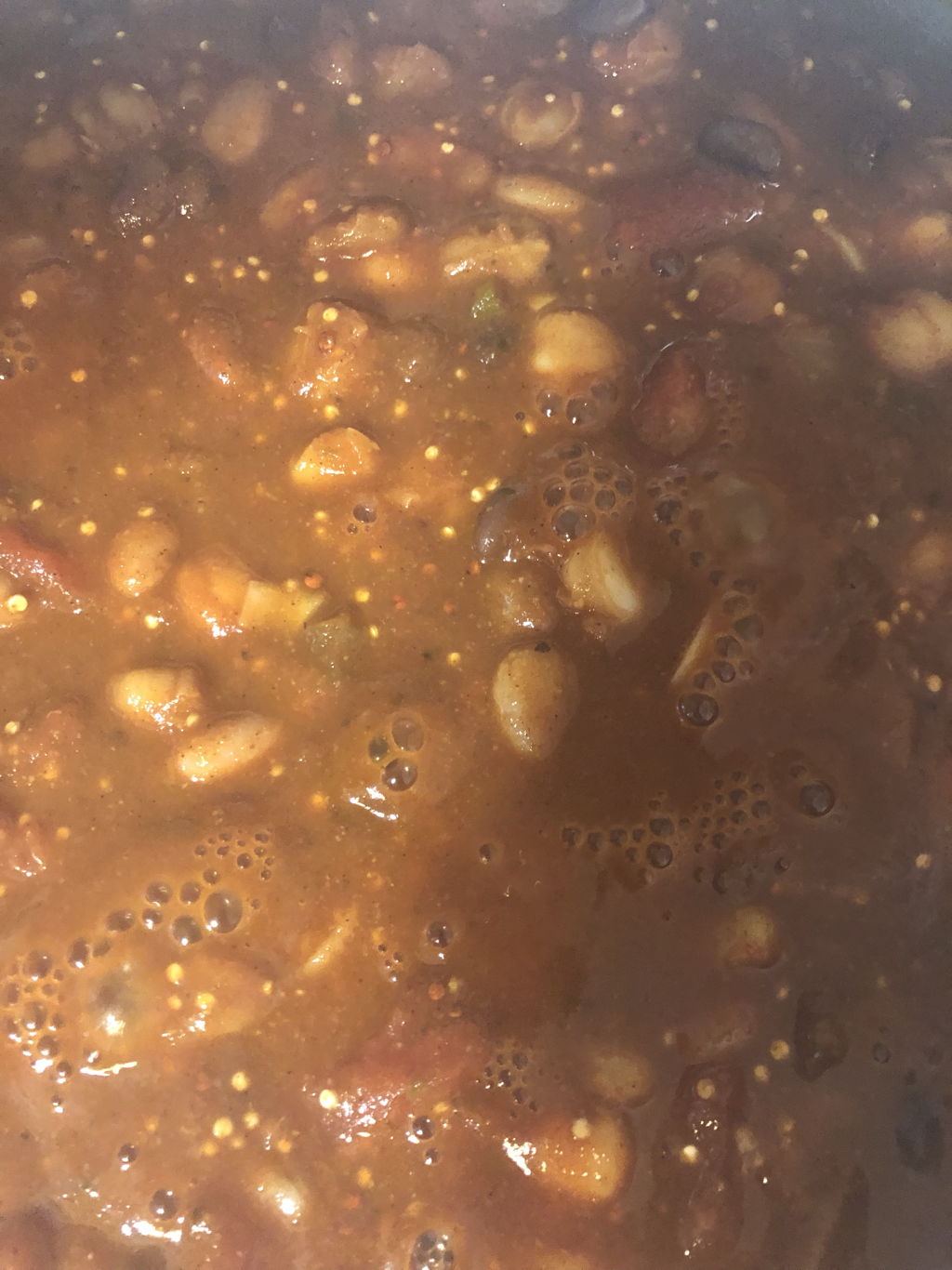|
I am not the most impressive cook but I do have a few tricks up my sleeve. I try to do well what I can do. I tend to gravitate toward recipes that are relatively uncomplicated, things that wont keep me on my toes for too long. I'd like to be able to relax and enjoy the experience and the aromas. I like the opportunity to slow down when I can. I feel my wholeness more in rituals, especially in cooking.
So here is what you will need: 24 oz of dried Beans – (mix of your choice - black, pinto, red or white) 1 can of garbanzo beans – rinsed and drained 1 can of corn or hominy (or both) – drained 1 Large onion (red or white), diced 2 cans of diced tomatoes 1 small can of tomato paste 8 cloves of garlic, minced 1 jalapeno, minced (or canned jalapeno) ¾ cup Quinoa (rinsed) Olive Oil Water 4 TBSP Chili Powder 1.5 TBSP Ground Cumin 1.5 TBSP Paprika 1.5 TBSP Mustard Powder 2 TBSP Onion Powder 2 TBSP Garlic Powder 1 TBSP Salt ½ TBSP Ground Pepper 1 TBSP Cayenne Pepper 1. Soak the dried beans overnight in some water (about 3 times the amount of water to dried beans.) Drain and set aside. Respect their process. Allow them to come into themselves. Let them sit and get used to the water. They need to be in the water. Detach. Trust the water will do what it needs to do and trust the beans will open up to them. 2. Heat a splash of olive oil in a large pot. When the oil is ready, add the onions, garlic, jalapeno (and any other vegetables you want, like carrots or celery). Sautee until translucent and soft. Respond and nurture. Pay attention to what the heat is doing to the ingredients. Be a witness to transformation. Observe. Smell what it does. Respond accordingly. 3. Add the diced tomatoes, tomato paste, quinoa. Sautee the mixture. Add in the dry ingredients (chili powder, ground cumin, paprika, mustard, onion, garlic, salt, pepper, cayenne). Add more oil if needed. Stir constantly to allow all the ingredients to blend together. Mix. Collaborate. Respond. Watch. Observe. Savor. 4. Next, introduce the beans and corn/hominy. Sautee all of the ingredients together until the spices become goopy and coats all the beans. Allow the spices to become fragrant and “bloom”. Again, observe. Be attentive. Trust it will do what it is meant to do. Have confidence. Respond. 5. Next, add heaps of water. Add about 2.5 times the amount of water to the chili. Water cools the spices. Water will cook the beans. Water heals, water enhances. Water transforms. 6. Let the pot simmer for the next 2 or 3 hours. Let things simmer and let them get used to each other. Let them interact with minimal interference from you. Step back and have faith they will do what they're supposed to do. 7. Taste it toward the 2nd hour or so when the mix starts to thicken. At this point, taste the chili and add any ingredients to alter to taste. You can also add honey or brown sugar to tame the spice level of the chili. Taste. Even if you have a recipe, you can change and alter where it is headed. You don't always know how it is going to turn out but there is something you can do about it. You have an element of control working in your favor. 8. Once you are satisfied with the overall taste and the chili has cooked down and become thick, turn off the burner. Evaluate. Is this what you want it to taste like? Get to know your ingredients. Get to know your tools. Alter some more if it calls for it. 9. Serve over a scoop of rice (to activate the proteins in the chili), with some cheese or sour cream. I also like to add a splash of olive oil to get more omegas and apple cider vinegar for some brightness. Celebrate and reap the rewards of your work. Appreciate what your hands have done, what your body has done and what your soul has experienced.
0 Comments
Your comment will be posted after it is approved.
Leave a Reply. |
Isabel Robles
Ramblings of the soul. Archives
October 2020
Categories
All
|


 RSS Feed
RSS Feed